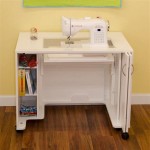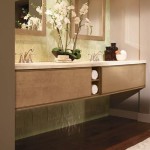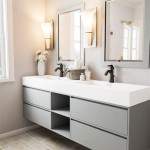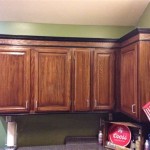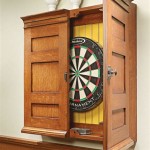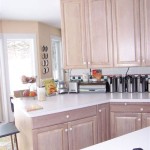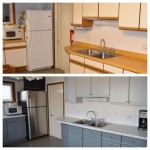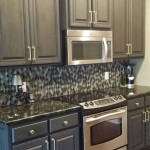Optimizing Your Kitchen With Range Hoods Under Cabinets in the Netherlands
The Netherlands, a country renowned for its innovative design and efficient use of space, presents unique challenges and opportunities for kitchen design. In densely populated urban areas, kitchens often prioritize functionality within limited square footage. A critical component in any Dutch kitchen, particularly those in apartments or smaller houses, is the range hood. Specifically, the under-cabinet range hood offers a practical and space-saving solution for maintaining air quality and preventing grease buildup. This article will explore the advantages, considerations, and installation aspects of under-cabinet range hoods in Dutch kitchens.
A range hood, also known as a ductless cooker hood or afzuigkap in Dutch, serves the crucial function of removing cooking fumes, smoke, grease, and odors from the kitchen environment. Without adequate ventilation, these contaminants can lead to several problems. They can deposit a sticky film on surfaces, contribute to unpleasant smells, and even pose health risks by affecting indoor air quality. In the Netherlands, where indoor climate control is particularly important due to the often-damp climate, a well-functioning range hood is essential for a comfortable and healthy living space.
Selecting the right range hood can be a complicated task. Deciding whether to go for a recirculating or vented hood, choosing the right extraction rate and physical dimensions, and even selecting the right style can be difficult. The under-cabinet models are well-suited for the smaller Dutch kitchens, or when someone wants to install the range hood themselves with minimal alterations to the kitchen infrastructure.
The under-cabinet range hood mounts directly beneath the kitchen cabinet above the stovetop. This positioning maximizes space utilization, making it ideal for smaller Dutch kitchens where every centimeter counts. These range hoods are generally more compact and less visually intrusive than other types, such as chimney hoods or island hoods. They blend seamlessly into the existing kitchen design, maintaining a clean and uncluttered aesthetic, a feature highly valued in Dutch interior design.
Space Efficiency and Design Integration
The primary advantage of the under-cabinet range hood is its ability to conserve valuable kitchen space. In the Netherlands, where maximizing functionality in limited areas is a priority, this feature is particularly appealing. By fitting snugly beneath an existing cabinet, the range hood avoids taking up additional wall or ceiling space. This allows for more storage space or the placement of other kitchen appliances. A well-chosen under-cabinet range hood can integrate harmoniously with the rest of the kitchen furniture. With the wide range of styles and finishes available, integrating it with a pre-existing kitchen is seamless.
The design integration of under-cabinet range hoods is another significant benefit. They are designed to be discreet and unobtrusive, often featuring a slim profile and clean lines. This minimalist aesthetic aligns well with the contemporary design preferences prevalent in many Dutch homes. Many models also offer customizable features, such as adjustable lighting and variable fan speed, allowing users to tailor the range hood to their specific needs and preferences. Proper lighting of the stovetop is an essential feature. Ensuring sufficient illumination when preparing meals is important for safety and visibility.
The installation process is a consideration when installing new appliances. In smaller apartments, there is often existing ductwork that can be reused and retrofitted. A professional can assess the current situation and suggest the easiest integration method for your scenario. This can remove the hassle of costly and time-consuming installation.
Filtration and Ventilation Options
Under-cabinet range hoods offer various filtration and ventilation options to suit different kitchen layouts and cooking styles. The two main types of ventilation are ducted and ductless. Ducted range hoods expel air outside through a duct, providing superior ventilation by completely removing fumes and odors from the kitchen. This is generally the most effective option but requires access to an external wall or roof for ducting. Ductless range hoods, on the other hand, recirculate the air through filters, typically charcoal filters, to remove odors and grease before releasing the air back into the kitchen. These are easier to install, as they do not require ductwork, making them suitable for apartments or kitchens where ducting is not feasible.
The choice between ducted and ductless ventilation depends on several factors, including the availability of ducting, the frequency and intensity of cooking, and personal preferences. In the Netherlands, many older apartments lack existing ductwork, making ductless range hoods a more practical option. However, ducted range hoods are generally preferred for their superior ventilation performance, particularly in homes where cooking is frequent and involves strong odors or greasy fumes. When choosing a ducted range hood, it is important to ensure that the ducting is properly installed and adequately sized to maximize airflow and minimize noise.
The types of filters used in a range hood are equally important. Grease filters, typically made of aluminum mesh or stainless steel, capture grease particles and prevent them from entering the ductwork or recirculating back into the kitchen. These filters should be cleaned regularly to maintain their effectiveness. Charcoal filters, used in ductless range hoods, absorb odors and other contaminants from the air. These filters need to be replaced periodically, as they lose their effectiveness over time. The frequency of replacement depends on the usage and the type of charcoal filter used. It is advisable to check the manufacturer's recommendations for filter cleaning and replacement to ensure optimal performance.
Installation Considerations and Maintenance
Proper installation is crucial for the effective operation and longevity of an under-cabinet range hood. While some homeowners in the Netherlands may opt for DIY installation, professional installation is generally recommended to ensure that the range hood is properly mounted, wired, and vented. This is particularly important for ducted range hoods, where incorrect ducting can significantly reduce airflow and increase noise levels. Before installation, it is essential to consult the manufacturer's instructions and local building codes to ensure compliance. The range hood should be positioned at the correct height above the stovetop, typically between 60 and 75 centimeters, to maximize its effectiveness.
Electrical wiring must be handled with care and in accordance with safety regulations. If the kitchen lacks an existing electrical outlet near the installation location, a qualified electrician should be hired to install one. The range hood should be properly grounded to prevent electrical hazards. For ducted range hoods, the ductwork should be properly sealed to prevent air leaks and maximize ventilation. The duct should also be as short and straight as possible to minimize airflow resistance. Using flexible ducting can simplify installation but may also increase airflow resistance. Rigid ducting is generally preferred for optimal performance.
Regular maintenance is essential for keeping an under-cabinet range hood functioning efficiently. Grease filters should be cleaned regularly, typically every one to three months, depending on the frequency of cooking. They can be washed in a dishwasher or by hand with warm soapy water. Charcoal filters in ductless range hoods should be replaced according to the manufacturer's recommendations, typically every three to six months. The exterior of the range hood should be cleaned regularly with a non-abrasive cleaner to remove grease and grime. It is also important to check the fan blades periodically for any buildup of dirt or debris. A clean range hood not only performs better but also looks more appealing.

Essential Guide To Choosing Your Kitchen Cooker Hood

How To Select The Best Cooker Hood

5 Kitchen Design Challenges And How To Solve Them

11 Open Shelving Kitchen Ideas Benefits And Alternatives

11 Open Shelving Kitchen Ideas Benefits And Alternatives

Vikio 30 In 900cfm Ducted Wall Mount With Led Light Range Hood Stainless Steel Rhp01 J The Home Depot

Five Exclusive High End Kitchen Designs Ideas Auro Realty

7 Unique Kitchen Remodel Ideas Higgason Construction

How To Max Out Your Tiny Kitchen Smitten
Nxr Eh Series Under Cabinet Range Hood With 800 Cfm Costco
Related Posts

